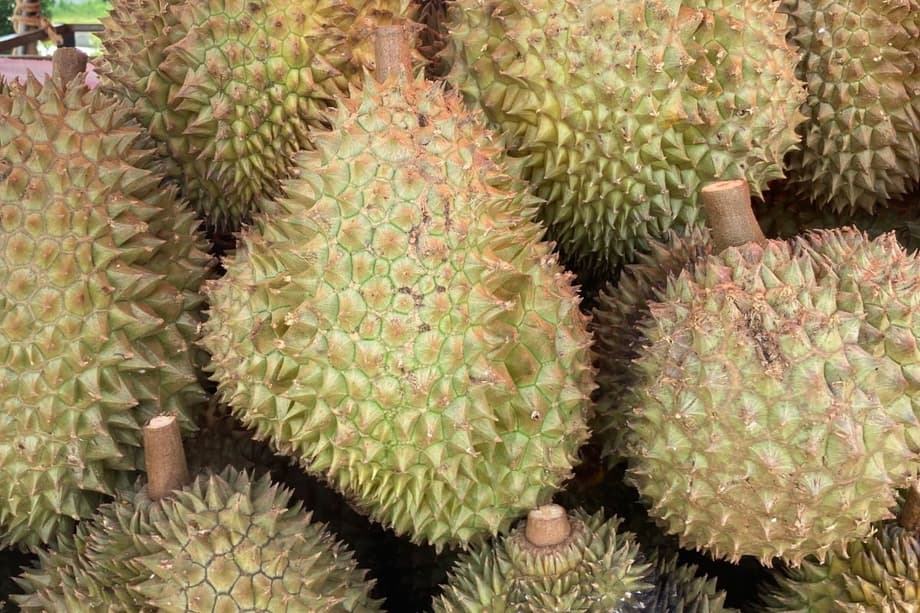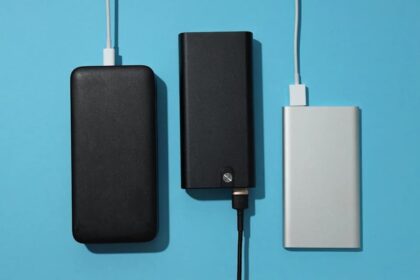Inside Indonesia’s push to sell durian straight to China
Indonesia is racing to establish direct access for its durians into China, a move that could lift profit margins for growers and exporters from about 10 percent to as high as 30 percent. The prize is access to the world’s largest durian market, where Chinese consumers account for the vast majority of global demand. The challenge is mastering the food safety standards and cold chain controls required by Chinese authorities, then building the logistics to deliver fruit that arrives fresh, clean, and compliant.
- Inside Indonesia’s push to sell durian straight to China
- Why direct exports matter to growers and consumers
- Cold chain, sanitation, and traceability
- Fixing the logistics: routes, ports, and the clock
- A crowded field: Thailand, Vietnam, and Malaysia
- Can supply match ambition
- Hubs of growth: Central Sulawesi and beyond
- Risks and the sustainability test
- What to Know
For years, much of the Indonesian fruit headed to China has been routed through neighbors that already have mature export systems. Indonesia’s durians often pass through Thailand or Malaysia, where packers handle phytosanitary approvals and large scale refrigeration. This routing cuts deeply into Indonesian margins. Direct exports would keep more of the value at home and give Indonesia greater control over quality and branding.
The regulatory groundwork is taking shape. China’s General Administration of Customs (GACC) has conducted audits of Indonesian plantations and packhouses. Indonesia has also secured a protocol for frozen durian exports, a stepping stone that gives officials and exporters a structured way to meet Chinese documentation and traceability requirements while work continues toward regular fresh fruit shipments.
Cold chain and sanitation are the make or break factors. Durian ripens quickly. Temperature swings, poor handling, or gaps in hygiene can spoil fruit or trigger rejection at the border. The path to direct access runs through standards that begin in the orchard and follow each fruit through packing, chilling, and transport, ending with a sealed container and digital records that track every step.
Why direct exports matter to growers and consumers
Direct sales are ultimately about capturing value that is now lost to intermediaries. When Indonesian durian is re-exported by others, each hand that touches the fruit takes a cut. A direct route to China reduces those steps, improves price transparency, and can support better returns for farmers. It also encourages investment in orchards, packhouses, and refrigerated logistics inside Indonesia rather than abroad.
There is a strong pull from the market. China imported around 1.56 million metric tons of durian in 2024, a volume worth roughly 7 to 8 billion US dollars. The fruit has become a hit with younger consumers and appears in everything from desserts to hot dishes. If Indonesia can shorten transit times and stabilize quality, additional supply from new origins could help ease retail prices while expanding choices for buyers.
Deputy Minister of Agriculture Sudaryono has argued that direct exports are essential for Indonesia to keep more of the value from its crops. After recent talks with his Chinese counterpart, he framed the goal in plain terms.
He said the current re-export model leaves Indonesia with thin margins and that cutting out transit would make a material difference to growers and packers.
Until now, our durian has been exported to Thailand, which then re-exports it to China. We only earn about 10 percent. If we export directly to China, we could gain up to 30 percent.
Cold chain, sanitation, and traceability
Indonesia has already cleared an important regulatory hurdle for frozen durian. The export protocol recognizes the Indonesian Quarantine Agency as the authority responsible for oversight. Packhouses must qualify as Plant Quarantine Installations, orchards must be registered, and every shipment must carry a phytosanitary certificate. Traceability is central. Records must follow the fruit from orchard to packing line and then to the container so inspectors can confirm origin, treatments, and handling.
Sahat Manaor Panggabean, who heads the Indonesian Quarantine Agency, said the protocol is intended to help both investment and farm incomes, and stressed the role of traceability in meeting Chinese rules.
With this export access, we aim to create a conducive investment climate in the horticulture sector and generate foreign exchange income to improve the welfare of Indonesian farmers.
What Chinese inspectors check
GACC audits typically look for reliable registration and mapping of orchards, good agricultural practices, and sanitation throughout packing. Inspectors review pest management, pesticide use and records, water quality for washing, and the way staff handle fruit. They examine temperature logs, cold storage capacity, and container sealing procedures. If officials are satisfied, authorities can approve a list of orchards and facilities to supply the market.
Starting with frozen durian helps manage risk. Frozen products tolerate longer journeys, and cold chain breaches are easier to detect. Malaysia followed a similar path years ago, gaining frozen access first, then fresh. Indonesia is seeking a comparable transition. The long term prize is fresh durian, which commands higher prices, but frozen access builds confidence and allows exporters to prove consistency under real shipments.
Fixing the logistics: routes, ports, and the clock
Direct shipping can only work if the fruit moves fast. Industry figures in Central Sulawesi say a new route from the Port of Pantoloan to Chinese ports could cut transit time from roughly a month to about one week and reduce ocean costs by as much as half. That time saved is priceless for a fruit that ripens quickly. Shorter journeys also reduce handling and damage, and help maintain the appearance that Chinese buyers expect.
From orchard to container
A successful durian export chain follows a strict sequence. Fruit must be harvested at the right maturity, then moved quickly into a pre-cooling room. Workers sort and clean durians with care, rejecting cracked or bruised fruit. Boxes are stacked to allow airflow. Refrigerated trucks must be ready to load pallets on a schedule so fruit does not sit in warm air. Containers must be pre-cooled and sealed. Each step needs temperature monitoring and digital records in case inspectors request proof.
Central Sulawesi is emerging as a pilot hub. Officials report a registered cultivation area of more than 3,000 hectares across five regencies, although only a fraction of orchards are fully registered so far. Fifteen packhouses are in place, with roughly half already registered, and three regencies have announced readiness for export trials. In Parigi Moutong, a key growing area, authorities say there are more than 1,100 hectares planted and several packaging houses that they consider meeting international standards.
A crowded field: Thailand, Vietnam, and Malaysia
Indonesia is entering a market dominated by established suppliers. Thailand has shipped durian to China for years and built strong brand recognition for varieties such as Monthong. Vietnam has expanded rapidly by tapping off season harvests and using quicker land routes into southern China. Malaysia gained visibility with frozen Musang King, then moved into whole fruit access. These countries already have dense networks of packers, transport links, and relationships with Chinese buyers.
There are also quality controversies that shape buyer behavior. Reports about unpermitted dye or high cadmium levels in some shipments from the region have drawn scrutiny from regulators. Heightened monitoring can slow clearance and raise costs. Indonesia sees an opening to present a clean and reliable chain, backed by tight traceability, as a selling point. Consistent performance over many shipments will be the proof that wins long term orders.
Indonesia can differentiate on supply timing. The archipelago’s varied microclimates mean harvests can be staggered across regions, offering near year round availability. Investors from China have shown interest in production hubs, and durian trees, once established, can produce for decades. These features appeal to buyers planning steady supply contracts. The test is whether growers can meet uniform standards at scale while domestic demand remains strong.
Can supply match ambition
Indonesia produces close to 2 million tons of durian in a typical year, but almost all of it is eaten at home. Official data show that only a small share is exported. In 2024, total durian exports were about 600 tons, worth roughly 1.8 million US dollars, mostly to Thailand and Hong Kong. Direct shipments to China have been negligible so far. Officials acknowledge that building export supply will take time and that early volumes will be modest.
Durian cultivation is a long game. Trees often need at least five years to bear at commercial levels. Once established, an orchard can produce for many seasons, but scaling responsibly requires time, training, and capital. A phased approach, starting with frozen shipments under the new protocol, then expanding to fresh fruit from approved orchards and packhouses, offers a practical runway to grow volumes without sacrificing quality.
Hubs of growth: Central Sulawesi and beyond
Government and industry attention has zeroed in on Central Sulawesi for a reason. The region has ample land under durian, an active network of packers, and a port that can support direct lines to China. Local leaders have publicly backed the development, encouraging growers to register orchards and upgrade facilities. Regional data point to more than 110,000 trees in production in Parigi Moutong alone, and a cluster of packaging houses now working to align with export standards.
Elsewhere in Indonesia, the Ministry of Agriculture has identified dozens of districts for durian development. The goal is to standardize orchard practices, expand cold storage, and create a pipeline of approved suppliers that can feed export programs year round. Successful audits by GACC will be crucial. Each approved orchard and packhouse adds volume and reduces dependence on a few locations, making the supply more resilient.
Risks and the sustainability test
New export opportunities bring pressure to expand quickly, and that creates risks. Environmental groups have warned that hasty plantation development in parts of Southeast Asia has replaced forests with monoculture orchards, reducing biodiversity and disrupting water systems. Indonesia’s push to export durian should avoid shortcuts that harm ecosystems or local communities. Careful land use planning, protection of primary forests, and support for smallholders can keep growth on a sustainable track.
There is also the risk of overreliance on a single buyer. China is the biggest market, but it is also a regulator with strict standards. If a shipment fails inspection, large volumes can be delayed or rejected. Diversifying markets over time and maintaining strict compliance can cushion the blow from any single disruption. Strong domestic demand helps, yet export grade fruit must still meet the higher bar that international buyers require.
The compliance burden is real. Exporters must invest in training, monitoring, and documentation. Farmers need access to credit to upgrade orchards and irrigation, and to adopt better post harvest handling. Governments can shorten the learning curve by publishing clear requirements, expanding laboratory capacity for residue testing, and subsidizing cold rooms in producing districts. These steps cost money up front but pay off if they secure stable access to a high value market.
What to Know
- Indonesia is seeking direct durian exports to China to lift margins from around 10 percent to as much as 30 percent.
- Success depends on strict cold chain control, sanitation, and traceability from orchard to container.
- China’s customs authority audited Indonesian orchards and packhouses and approved a protocol for frozen durian exports.
- Fresh durian shipments are the main commercial goal, but frozen exports are the first step to build compliance and confidence.
- Indonesia produces close to 2 million tons of durian a year, yet exports remain tiny and domestic demand is strong.
- A proposed direct sea route from Central Sulawesi to China could cut transit times to about one week and lower costs by up to half.
- Central Sulawesi has thousands of hectares under durian, with several registered packhouses and more facilities working toward approval.
- Thailand, Vietnam, and Malaysia dominate China’s market, so Indonesia will compete on reliability, timing, and consistent quality.
- Strict standards apply. Failures on residue, pests, or temperature control can lead to border rejections.
- Rapid expansion carries environmental and social risks. Responsible land use and support for smallholders are key to sustainable growth.












